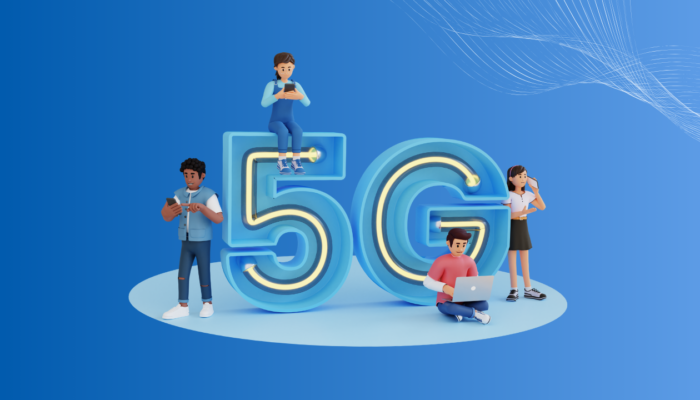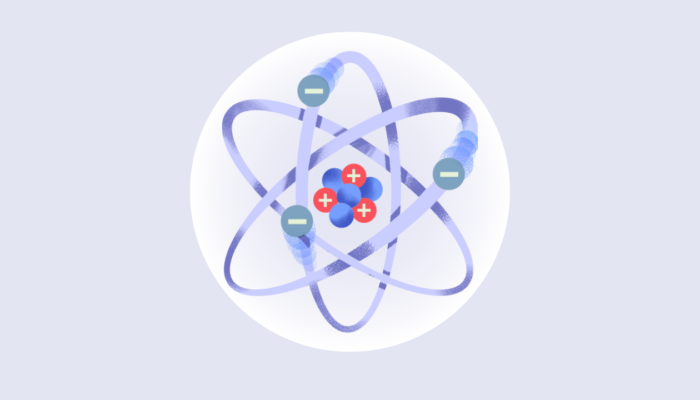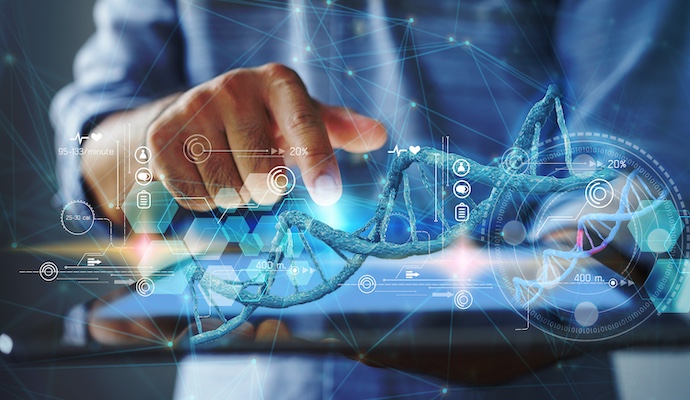Towven.com – Artificial intelligence (AI) is no longer just a concept confined to science fiction novels and movies; it has seamlessly integrated into our daily lives.
But how did we transition from imagining AI in futuristic worlds to having it assist us with everyday tasks? Let’s embark on a journey through the evolution of AI and explore its impact on the world around us.
Understanding Artificial Intelligence
Artificial Intelligence refers to the simulation of human intelligence in machines programmed to think and mimic human actions.
This technology enables computers to perform tasks that typically require human intelligence, such as visual perception, speech recognition, decision-making, and language translation.
There are several key concepts to understand when delving into AI:
- Machine Learning: A subset of AI, machine learning involves training algorithms to recognize patterns in data and make predictions or decisions based on those patterns, without being explicitly programmed. There are various techniques within machine learning, including supervised learning, unsupervised learning, and reinforcement learning.
- Deep Learning: A subset of machine learning, deep learning involves using neural networks with many layers (hence “deep”) to learn from large amounts of data. Deep learning has achieved remarkable success in tasks such as image recognition, natural language processing, and speech recognition.
- Natural Language Processing (NLP): NLP focuses on enabling computers to understand, interpret, and generate human language in a way that is both meaningful and contextually relevant. Applications of NLP include machine translation, sentiment analysis, chatbots, and text summarization.
- Computer Vision: Computer vision enables computers to interpret and understand visual information from the real world, such as images and videos. Applications of computer vision include object recognition, image classification, facial recognition, and autonomous vehicles.
- Robotics: Robotics combines AI with mechanical engineering to create robots that can perform tasks autonomously or with minimal human intervention. Robotics applications range from industrial automation and manufacturing to healthcare and service industries.
- Ethical and Societal Implications: As AI technologies become more advanced and pervasive, there are important ethical considerations to address, such as bias in algorithms, privacy concerns, job displacement due to automation, and the potential for misuse of AI for malicious purposes.
- Explain ability and Transparency: As AI systems become increasingly complex, there is a growing need for them to be transparent and explainable. Understanding how AI systems arrive at their decisions is crucial for building trust and ensuring accountability.
- Human-AI Collaboration: The future of AI is likely to involve collaboration between humans and AI systems, where each complements the strengths of the other. This can include AI assisting humans in decision-making, automating repetitive tasks, and augmenting human capabilities in various domains.
Overall, understanding artificial intelligence involves grasping its underlying principles, learning about its various subfields and applications, and critically evaluating its impact on society.
The Evolution of AI
AI has come a long way since its inception. Initially, AI was primarily a subject of fascination for researchers and futurists.
However, significant advancements in computing power, algorithms, and data availability have propelled AI from theoretical concepts to practical applications.
Here’s a brief overview of its evolution:
- Early Foundations (1940s-1950s):
- The concept of AI emerged in the 1940s and 1950s, with pioneers like Alan Turing proposing the idea of intelligent machines and developing the Turing Test as a measure of machine intelligence.
- In 1956, the term “artificial intelligence” was coined at the Dartmouth Conference, where researchers gathered to discuss the potential of creating machines with human-like intelligence.
- Symbolic AI (1950s-1960s):
- Symbolic AI, also known as “good old-fashioned AI” (GOFAI), focused on representing knowledge in terms of symbols and rules.
- Early AI systems, such as the Logic Theorist and General Problem Solver, demonstrated the ability to solve specific problems using symbolic manipulation.
- AI Winter (1970s-1980s):
- Despite initial optimism, progress in AI slowed down due to challenges such as limited computational power, lack of data, and unrealistic expectations.
- This period, known as the “AI winter,” saw reduced funding and interest in AI research.
- Connectionism and Neural Networks (1980s-1990s):
- Researchers explored alternative approaches to AI, including connectionism and neural networks inspired by the structure and function of the human brain.
- The development of backpropagation algorithm by Geoffrey Hinton and others in the 1980s significantly improved the training of neural networks.
- Applications like handwriting recognition and speech recognition started to gain traction.
- Rise of Machine Learning (2000s-2010s):
- Advances in machine learning algorithms, fueled by the availability of large datasets and increased computational power, led to significant progress in AI.
- Techniques such as support vector machines (SVMs), decision trees, and deep learning revolutionized various domains, including computer vision, natural language processing, and robotics.
- Companies like Google, Facebook, and Amazon heavily invested in AI research and applications, driving innovation in areas like autonomous vehicles, virtual assistants, and recommendation systems.
- Ethical and Societal Concerns:
- As AI technologies became more pervasive, concerns regarding ethics, bias, privacy, and job displacement grew.
- Organizations and governments started to grapple with the ethical implications of AI deployment, leading to the development of guidelines and regulations.
- Current Trends (2020s-present):
- AI continues to advance rapidly, with ongoing research focused on addressing challenges such as interpretability, robustness, and fairness.
- Emerging technologies like reinforcement learning, generative adversarial networks (GANs), and transformers are pushing the boundaries of what AI can accomplish.
- There’s a growing emphasis on interdisciplinary collaboration, combining AI with fields like neuroscience, psychology, and ethics to create more human-centered and responsible AI systems.
Overall, the evolution of AI reflects a journey marked by perseverance, innovation, and the continual quest to emulate and augment human intelligence.
AI in Everyday Life
Today, AI permeates various aspects of our daily routines, often without us even realizing it.
From personalized recommendations on streaming platforms to voice assistants like Siri and Alexa, AI enhances convenience and efficiency in our lives.
AI in Healthcare
In healthcare, AI assists medical professionals in diagnosing diseases, analyzing medical images, and even predicting patient outcomes.
With AI-powered tools, healthcare providers can deliver more accurate diagnoses and personalized treatment plans, ultimately improving patient care.
AI in Transportation
The transportation industry has embraced AI to enhance safety, efficiency, and sustainability.
Self-driving cars utilize AI algorithms to navigate roads and make real-time decisions, potentially reducing accidents and alleviating traffic congestion.
AI in Entertainment
Entertainment platforms leverage AI to curate content tailored to individual preferences.
Streaming services use recommendation algorithms to suggest movies and shows, while video games employ AI to create immersive and dynamic gameplay experiences.
Ethical Considerations of AI
As AI continues to evolve, it raises ethical concerns regarding privacy, bias, and job displacement.
Safeguarding data privacy and ensuring fairness in AI algorithms are crucial to mitigating these ethical challenges and fostering trust in AI technologies.
The Future of AI
Looking ahead, AI holds immense potential to revolutionize various industries and address pressing global challenges.
From advancing medical research to optimizing resource allocation, the possibilities are limitless as we continue to harness the power of artificial intelligence.
Frequently Asked Questions about AI
- What is Artificial Intelligence?
Artificial Intelligence refers to the simulation of human intelligence in machines programmed to think and mimic human actions. It enables computers to perform tasks that typically require human intelligence, such as visual perception, speech recognition, decision-making, and language translation.
- How is AI used in everyday life?
AI is integrated into various aspects of daily life, from personalized recommendations on streaming platforms to voice assistants like Siri and Alexa. It enhances convenience and efficiency by automating tasks and providing tailored experiences.
- What are the ethical considerations of AI?
Ethical concerns surrounding AI include issues related to privacy, bias, and job displacement. It’s essential to address these concerns by implementing measures to safeguard data privacy, ensure fairness in AI algorithms, and mitigate the impact of job displacement through reskilling and education initiatives.
- What industries benefit from AI?
AI has transformative applications across various industries, including healthcare, transportation, entertainment, finance, and manufacturing. It improves efficiency, productivity, and decision-making processes, ultimately driving innovation and growth.
- What does the future hold for AI?
The future of AI is promising, with continued advancements expected to drive innovation and address complex challenges. From enhancing healthcare outcomes to optimizing resource management, AI will play a pivotal role in shaping the future of society.







